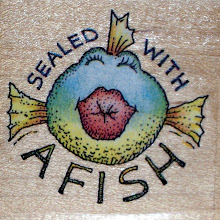It was early, the sun barely breaking through the horizon. I heard them a ways off at first, then closer as they moved through the neighborhood; the excited yips and cries of a coyote family. We actually see them occasionally, most often just the parents making their way through the yards and washes.
It felt like the perfect way to wake up, invigorated, inspired. I love when that happens. I also heard a bird call that I have never heard before and an answer from another, farther away. Perhaps a pair just migrating through.
 |
Yes, I am still trying to get that ever elusive perfect hummer shot!
I just sat with my long lens and clicked away. Don't you just love digital?
Uh, do you see what I see? On the left side feeding? A Rufous!
 |
The adult male has a white breast, rufous face, upperparts, flanks and tail and an iridescent orange-red throat patch (gorget). Some males have some green on back and/or crown. The female has green upperparts, white underparts, some iridescent orange feathers in the center of the throat, and a dark tail with white tips and rufous base. Females and the rare green-backed males are extremely difficult to differentiate from Allen's Hummingbird.
Their breeding habitat is open areas and forest edges in western North America from southern Alaska to California. This bird nests further north than any other hummingbird. The female builds a nest in a protected location in a shrub or conifer. The male aggressively defends feeding locations within his territory. The same male may mate with several females.
They are migratory, many of them migrating through the Rocky Mountains and nearby lowlands in July and August to take advantage of the wildflower season there. They may stay in one spot for considerable time, in which case the migrants, like breeding birds, often aggressively take over and defend feeding locations. Most winter in wooded areas in the Mexico state of Guerrero, traveling over 2,000 miles by an overland route from its nearest summer home—a prodigious journey for a bird weighing only three or four grams.
And here he is in my backyard!
















7 comments:
Great shots. We have had to put our feeders away. The frost has hit our area and the hummingbirds have disappeared, as well as the finches. We'll be putting our winter feeders out soon -- those attract all sorts of birds, and even a few deer on occasion. :) M
You got really great closeups! They are terrific :) I wish I could watch them along with you!
What luck!! And of course your camera was at the ready. Great work.
OH MY GOODNESS!!!....See, how special you are, my sweet friend in dry lands? God knows how your heart would leap :)
yay♥
Shabbygirl...I always love your hummingbird pictures and today I learned something as well...double treat for me today! The hummingbirds have now almost disappeared from our part of the Midwest. You probably have them year round???
Dan
Dan, the only hummer that lives here year round is the Anna's Hummingbird. Everyone else is just travelin' through to Mexico. I'll have to go up the mountain to Ramsey Canyon where the Preserve has "many" feeders. There are probably swarms of them right now!
I am not an envious person but I would so so love the opportunity to see the hummingbirds. Your photos are lovely.
Post a Comment